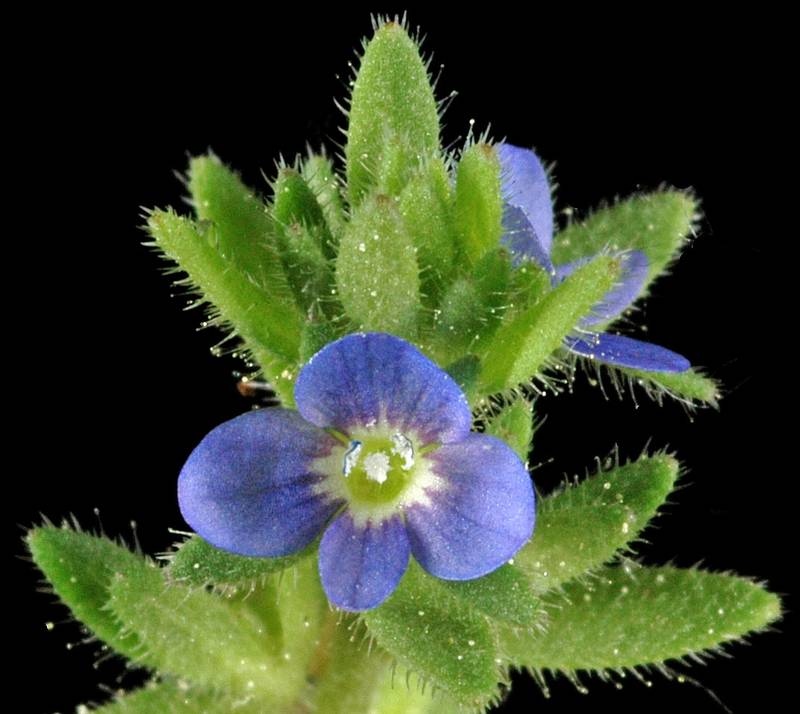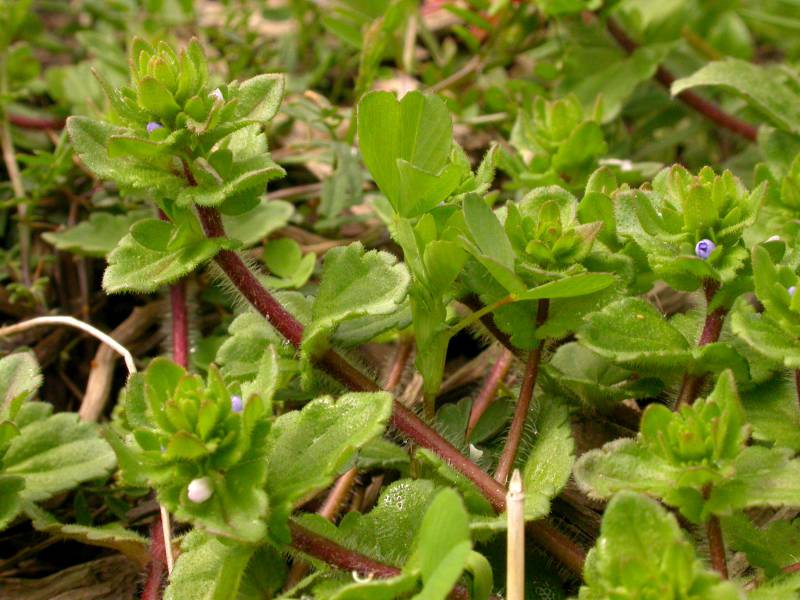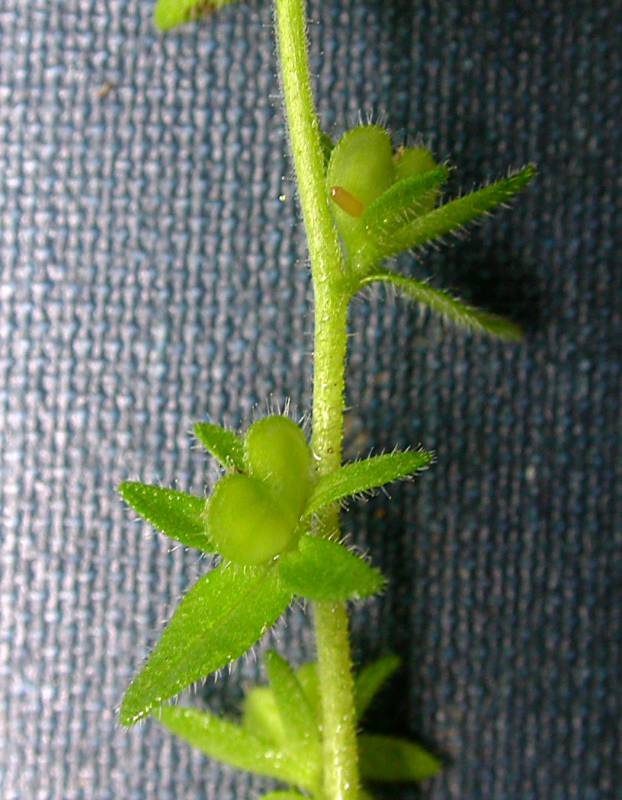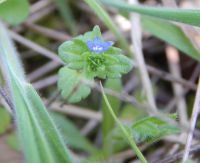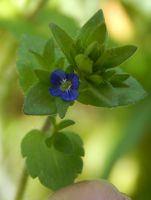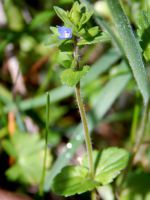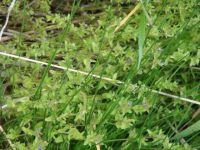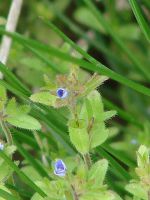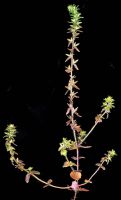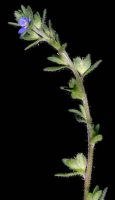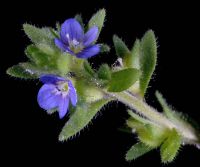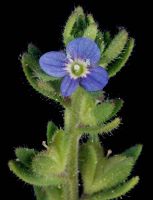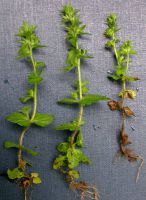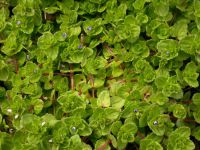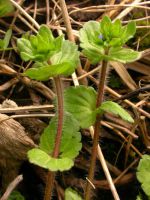Distribution: Occurring on both sides of the Cascades crest in Washington; Alaska to California, east across most of North America to the Atlantic Coast.
Habitat: Disturbed ground, gardens and roadsides
Flowers: April-September
Origin: Introduced from Eurasia
Growth Duration: Annual
Conservation Status: Not of concern
Pollination: Bees, flies
Taprooted annual, somewhat hairy below and puberulent above, the stem erect to nearly prostrate, 0.5-3 dm. long, simple or branched below.
Leaves opposite, ovate to broadly elliptic, 1.5-2.5 cm. long and half as wide to nearly as wide as long, with rounded serrations, the lower short-petiolate, the upper sessile.
Inflorescence a terminal, bracteate, condensed or elongate, spike-like raceme; bracts alternate, narrower than the leaves, each subtending a single flower; calyx of 4 sepals; corolla blue-violet, 2-2.5 mm. wide, rotate, 4-lobed, the upper lobe the largest; pedicels 1-2 mm. long; style 0.4-1 mm. long; stamens 2.
Capsule 3 mm. high, obcordate.
Publication: Sp. Pl. 1: 13. 1753.
PNW Herbaria: Specimen records of Veronica arvensis in the Consortium of Pacific Northwest Herbaria database
WA Flora Checklist: Veronica arvensis checklist entry
OregonFlora: Veronica arvensis information
E-Flora BC: Veronica arvensis atlas page
CalPhotos: Veronica arvensis photos

